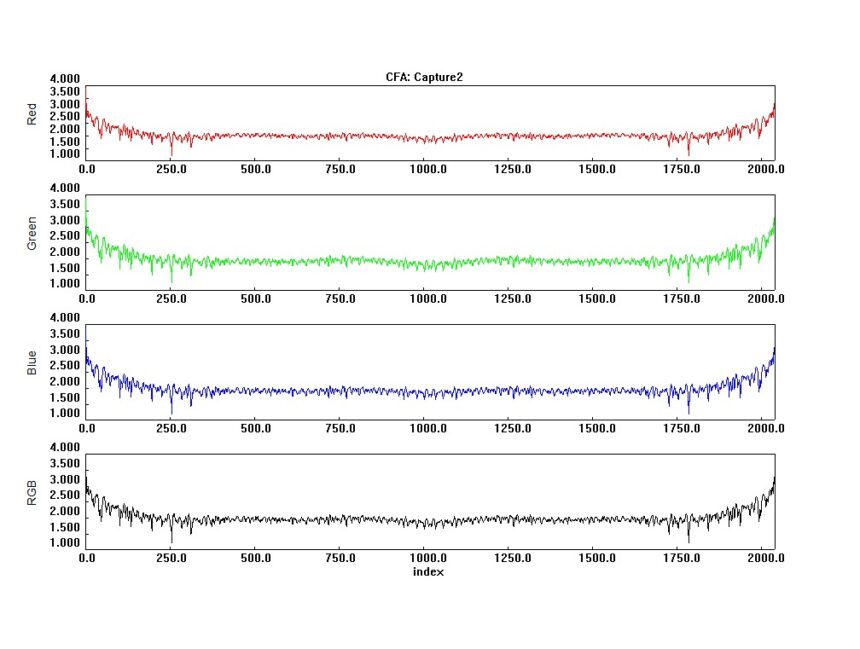In an era dominated by visual content, the authenticity of digital images is paramount, especially in forensic investigations. The ability to manipulate images has become increasingly sophisticated, necessitating advanced tools to distinguish genuine images from doctored ones. FiA: Forensic Image Analysis Software emerges as a critical tool for counter-terrorism and law enforcement, leveraging state-of-the-art digital image processing techniques to ensure the integrity of visual evidence. This article explores the cutting-edge features of FiA and their applications in forensic image authentication.
The Critical Need for Image Authentication
Digital images play a pivotal role in modern communication, from social media posts to news reports. However, the ease with which these images can be edited poses significant challenges, particularly in forensic contexts. Accurate image authentication is essential to prevent the spread of misinformation, secure legal proceedings, and aid in criminal investigations. FiA: Forensic Image Analysis Software provides the technological edge needed to tackle these challenges head-on.
Core Features of FiA: Forensic Image Analysis Software
FiA is equipped with a comprehensive suite of tools designed to uncover even the most subtle image manipulations. Here are the standout features that make FiA an indispensable asset in forensic image analysis:
1. Block Artifact Detection
Block artifacts are indicators of image compression and potential tampering. FiA’s block artifact detection meticulously analyzes these artifacts to identify manipulated regions within an image. By examining the block patterns, FiA can pinpoint inconsistencies that suggest image editing, providing crucial evidence in forensic investigations.
2. Compression Level Analysis
Images subjected to multiple compressions exhibit unique compression signatures. FiA’s compression level analysis tool scrutinizes these signatures to detect re-compressions, a common technique used in image tampering. This feature allows investigators to trace the image’s edit history, revealing any suspicious alterations.
3. ADJPEG Analysis
Advanced JPEG (ADJPEG) analysis is tailored to detect discrepancies within JPEG files, the most prevalent image format. FiA’s ADJPEG analysis delves into the intricacies of JPEG compression, identifying irregularities that signal tampering. This tool is particularly effective in forensic scenarios where JPEG images are frequently encountered.
4. Correlation Mapping
FiA’s correlation map visually represents the relationships between different parts of an image, highlighting cloned or duplicated regions. Such duplications are common signs of image manipulation. The correlation map provides a clear, visual representation of these anomalies, aiding investigators in identifying tampered areas.
5. Color Filter Array (CFA) Examination
Digital cameras capture images using a color filter array. FiA’s CFA examination assesses the uniformity of these arrays across the image. Inconsistencies can indicate modifications or the use of different capture settings, both of which are red flags in forensic analysis. This feature is crucial for verifying the authenticity of digital photographs.

6. Smart Error Level Analysis
Traditional error level analysis (ELA) can sometimes produce misleading results. FiA’s smart error level analysis enhances ELA by employing adaptive algorithms that adjust based on the image’s characteristics. This adaptive approach significantly improves the accuracy of detecting image manipulations, ensuring that even subtle edits are uncovered.
7. Multi-Spectral Color Spaces Analysis
Analyzing an image in different color spaces can reveal various aspects of its composition. FiA’s multi-spectral color space analysis allows investigators to examine images in multiple color spaces, such as RGB, HSV, and YCbCr. This comprehensive analysis helps detect subtle manipulations that might go unnoticed in a single color space.
Adaptive Error Level Analysis: A Game Changer
One of FiA’s most innovative features is its adaptive error level analysis. Unlike traditional ELA, which can be static and prone to false positives, FiA’s adaptive approach dynamically adjusts its sensitivity to the image’s characteristics. This results in a more accurate detection of tampering, making it an invaluable tool for forensic investigators.
Applications in Counter-Terrorism and Law Enforcement
FiA’s advanced capabilities make it a critical asset in counter-terrorism and law enforcement. Here’s how:
- Counter-Terrorism: Verifying the authenticity of images from social media, surveillance footage, and intelligence reports is crucial in counter-terrorism. FiA ensures that these images are genuine, providing reliable information for decision-making.
- Law Enforcement: Digital images are often pivotal in criminal investigations. FiA helps law enforcement officials authenticate these images, ensuring that evidence is credible and unaltered, thus supporting accurate and fair investigations.
- Legal Proceedings: In the courtroom, the authenticity of digital evidence is paramount. FiA provides the necessary tools to verify that images presented as evidence are genuine, maintaining the integrity of the judicial process.
Conclusion
In today’s digital landscape, the ability to authenticate images is more important than ever. FiA: Forensic Image Analysis Software offers a robust solution for forensic image authentication, equipped with advanced features such as block artifact detection, ADJPEG analysis, and adaptive error level analysis. These tools empower counter-terrorism and law enforcement agencies to ensure the integrity of visual evidence, uphold justice, and combat misinformation. As digital image processing continues to evolve, FiA remains at the forefront, providing the expertise and reliability needed to navigate the complex world of digital forensics.









